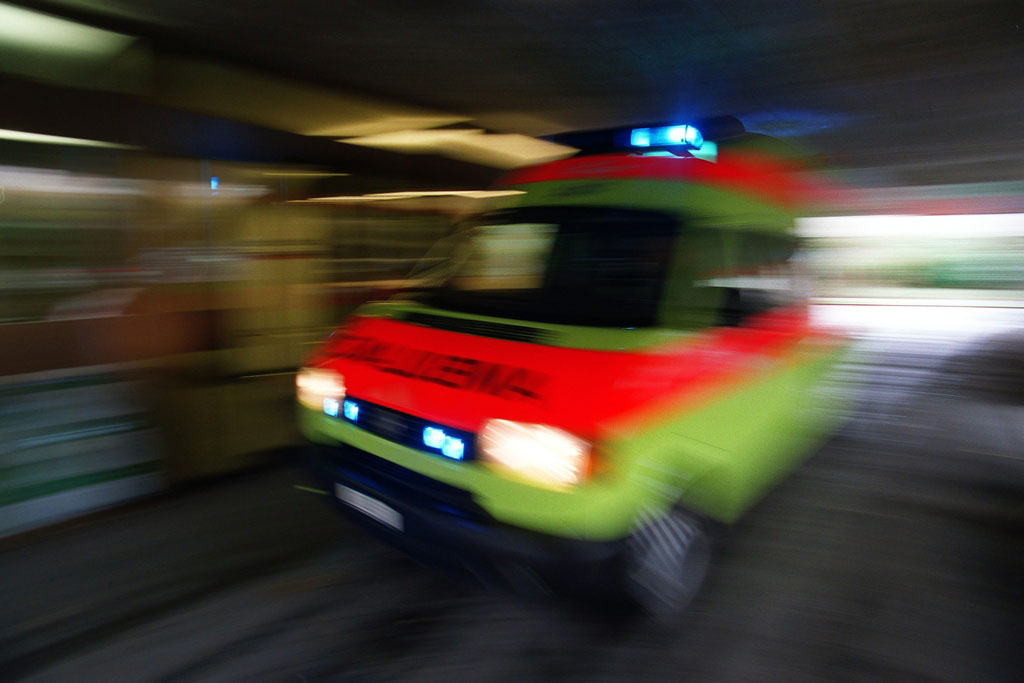
“Stress marker” benefits stroke patients

Measuring a stress hormone in the brain can help doctors judge the severity of a stroke and improve treatment, according to Swiss researchers.
A team at the neurology clinic at Basel University Hospital measured the concentration of copeptin in the blood of 362 stroke patients. The higher the level of copteptin, the greater the likelihood that things wouldn’t turn out well.
As they euphemistically concluded in their paper, published in the latest edition of Annals of Neurology, “non-survivors had significantly increased copeptin levels on admission”.
Lead researcher Mira Katan told swissinfo.ch: “If you come into the emergency department with a cerebrovascular event such as an ischemic stroke – which is what we studied – or another kind of stroke, and you have very high levels of this stress hormone, then there is a high chance that you won’t recover very well.”
Ischemic strokes result from an inadequate supply of blood and oxygen to the brain due to blockage of an artery. They account for the vast majority of strokes.
“It’s a new approach to patients who have had strokes – having a prognostic marker which really helps in risk stratification [medical decision-making],” she said. “In cardiology there are a lot of markers in use, but for strokes and neurology there aren’t any markers until now.”
Complementary
But Katan emphasises that measuring the stress hormone levels in no way replaces careful questioning and examination of the patient.
“It’s very important to say that this is an additional tool. You can’t come into the ER and just measure the blood marker. There are many sources of information – talking to the patient, physical examinations, imaging and so on,” she said.
“So it’s not that copeptin alone is used, but together with this other information you get significantly more accurate risk predictions.”
A rapid diagnosis can make all the difference with strokes, which can lead to death or paralysis.
“People always want to know things like ‘can my mother walk again in three months?’ ‘Will she be disabled?’” Katan said.
“Of course with the marker you can’t be 100 per cent sure – such a marker doesn’t exist – but it helps and it’s more objective than just a doctor’s intuition.”
Future research
In recent years scientists have increasingly turned their attention to using hormones produced naturally in the body as prognostic or diagnostic tools for treating diseases.
Stress hormones are released in the body at times of high stress, making one’s heart beat faster, and their levels remain high for as long as 72 hours.
After a stroke for example the body immediately sends out various stress hormones, although many metabolise fairly quickly and are therefore difficult to measure.
Katan said the next step would be to evaluate the marker in a trial conducted at several clinical research centres.
“We looked at 362 people but we want to see if it still holds true if you look at thousands of people,” she said.
“We also want to know about the subgroup of patients who respond to an intervention like thrombolysis [blood clot busting] and the subgroup of patients for example with transient ischemic attacks [mini strokes that result in neurological dysfunction for less than 24 hours] to assess how big the risk is of these patients suffering a real stroke.”
Thomas Stephens, swissinfo.ch
The human heart is only the size of a fist, but it is the strongest muscle in the human body.
The heart starts to beat in the uterus long before birth, usually by 21 to 28 days after conception.
The average heart beats about 100 000 times daily or about two and a half billion times over a 70 year lifetime.
With every heartbeat, the heart pumps blood around the body. It beats about 70 times a minute, although this rate can double during exercise or at times of extreme emotion.
(World Health Organization)
Strokes are caused by disruption of the blood supply to the brain.
This may result from either blockage (ischaemic
stroke) or rupture of a blood vessel (haemorrhagic stroke).
Risk factors include high blood pressure, atrial fibrillation (a heart rhythm disorder), high blood cholesterol, tobacco use,
unhealthy diet, physical inactivity and diabetes,
(World Health Organization)

In compliance with the JTI standards
More: SWI swissinfo.ch certified by the Journalism Trust Initiative





























You can find an overview of ongoing debates with our journalists here . Please join us!
If you want to start a conversation about a topic raised in this article or want to report factual errors, email us at english@swissinfo.ch.